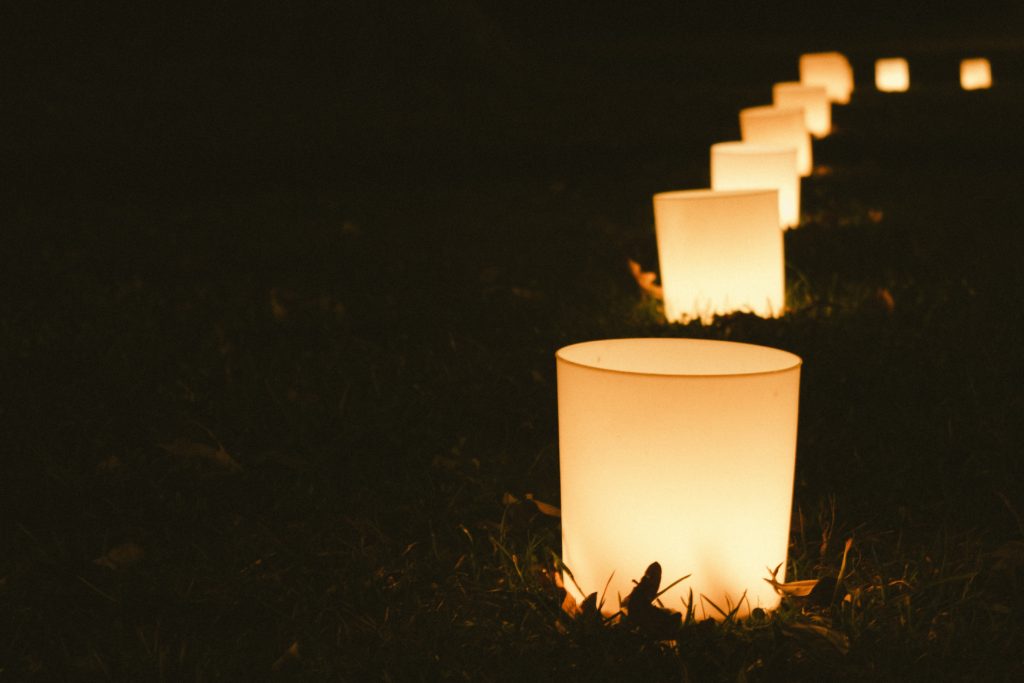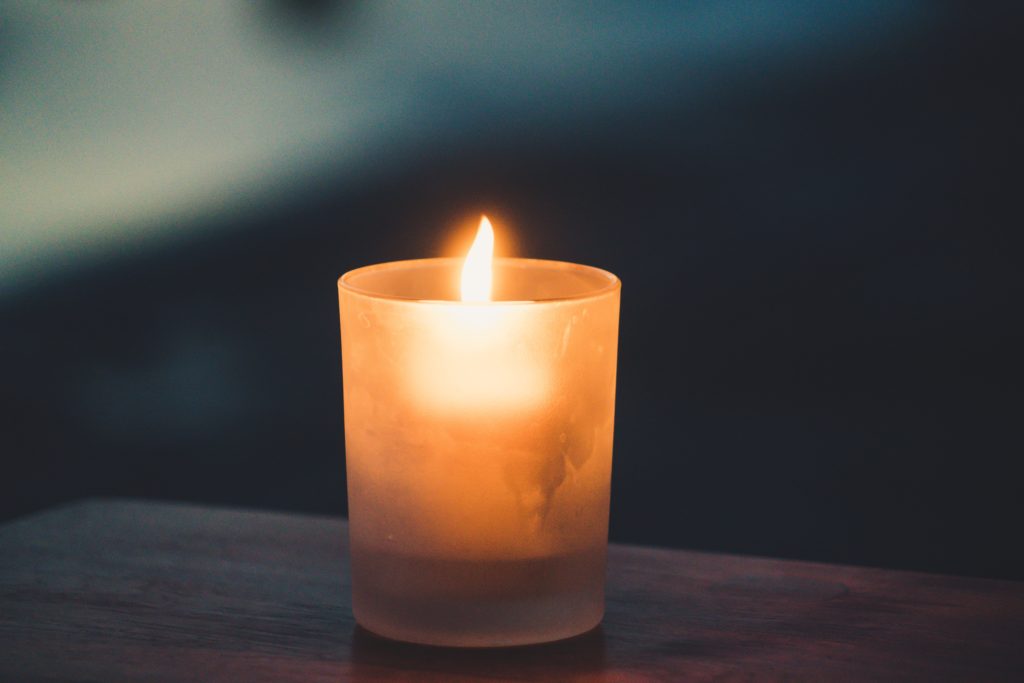We all have people, places, situations that trigger us. And we’re dealing with lots of…
Cultivating Nearness: The Groundwork for Spiritual Object Constancy
It was Christmas, Christmas in a new city. Mom called me with google map directions and I printed them off in my college dorm before. We had packed up the stone ranch in northern Ohio the summer before and as I went to college as a freshman, the family moved to Philadelphia for dad to get more training.
Mom is an expert at creating traditions around holidays. Back in Ohio we traveled to The Christmas Tree barn and huddled on a sleigh ride armed with a dull tree saw and parkas. There were large family gatherings and hot chocolate after trying to ice skate on the pond out front, more washboard then rink. On Christmas Eve we kids slept in the living room in front of the fireplace and woke up together ready to open presents.
But old traditions felt forced in a new location. They had lost their rhythm. Lost their magic.
Christmas Eve in Philly we drove to the big box mega church at dusk. And although I’m sure there were carols sung those details have slipped my memory. It was on the drive home to our new apartment that Christmas began. On the left and right of us neighborhoods were lit with luminaria, maybe you’ve seen them…White paper bags filled with sand and a small votive candle. Every ten feet a new bag perforated the darkness around cul-de-sacs and curving roads. We drove through one neighborhood after another, hushed at the beauty of warm light bouncing off the snow.
Sometimes God’s Presence is like that. We’re sojourning in a new land like Jacob and are surprised to see God show up…
“Surely he said after seeing the vision of angels ascending and descending, “ the LORD is in this place, and I was unaware of it.”
Other times God extends an invitation for us to cultivate a close walk with Him. Cultivate nearness from one step to another, one moment to another lit by the light of His Presence.

So here’s my question: Is it possible to intentionally place sensory reminders of the truth of God’s Presence and walk from present moment to present moment using them to remind us that God is here? Whether it’s a lit candle, a praise song on repeat, the liturgy of the hours at a monastery, or a cross in your pocket?
The Presence candle is lit on my kitchen island this morning. Every once in a while, I look up from the computer and watch the flicker remembering, in the midst of my everyday, ordinary, “God, You are here.” The kids filled the dishwasher after last night’s burgers but left a sink full of the big pans. The iron is still out from Sunday morning’s rush. And the chai tea I’ve been sipping since my first son got up for school at 6, is waiting for a refill. This is my ordinary controlled chaos. It’s not cleaned up perfect. It’s not scrubbed. Yet God is here and the flicker reminds me.
In the midst of my speeding through this day, I need a still point, like the clock on the wall the dancers eyes keep returning to as they accomplish their turns.
An anchor.
This candle calls me back to truth:
We are never outside the warmth of the flicker of the love of God.

And’s here’s the brain science around this practice. By using a constant reminder of God’s presence, we’re laying the groundwork for spiritual object constancy.
Now What do I mean by that?
Last week we talked about our brains needing to be rewired for perfect love.
Sofia, a ten year old, refused to sleep when she was brought home from the African orphanage. Every night was a battle. Her adopted mother followed all the conventional advice, establishing a slow bedtime routine, bath, books, time for cuddling. But as soon as her mother walked out the door, Sofia panicked. And then If Sofia happened to fall asleep from exhaustion while Diana was still in the room, she would wake up multiple times throughout the night crying out for Diana’s presence. Diana finally figured out that Sofia equated her lack of presence with a lack of love and a lack of security. She feared abandonment as soon as Diana was out of her sight. Sofia, of course, hadn’t reached emotional object constancy.
It takes time to establish that love is not scarce. It takes time to trust that love will be there tomorrow and tomorrow and tomorrow.
Emotional object constancy is the emotional equivalent in attachment theory to physical object permanence in a child’s development
Lets see if I can explain this well:
Have you ever played hide and seek with a young toddler and watch them crawl out of the room looking for you when you were still sitting on the couch, a large mound with a blanket over your head? When you pulled that blanket over your head, the little one literally no longer believed you were there. She has not achieved object permanence.
Emotional object constancy is similar. It takes thousands of interactions of faithful loving care for a child to achieve emotional object constancy. Each time a caregiver responds consistently to a cry, each soothing voice, each nighttime rocking, each focus of delight gets stored in the brain building a neural pathway which creates a sense of security.
Love is transferred by holding, rocking, soothing, breastfeeding, cuddling, and that 18 inch loving eye-to-eye contact. One attachment expert pointed out that object constancy is transferred through thousands of messages given through our senses that we are safe, loved, and cared for. We feel arms wrapped around us. We see eyes of love. We hear the soothing voice of the caregiver. We smell her skin. We taste milk.
Object constancy is transferred through the senses.
Over time, the love of the caregiver is stored up within the child and the child is given a sense that they are living in a safe and secure world. The child trusts the caregiver will continue to give loving care.
Sofia’s mom, aching from exhaustion, called her adoption services representative who had an idea. What if Diana was able to prove that she was still thinking about her daughter throughout the night and that her daughter was safe? Diana strung a wire above Sofia’s bed and throughout the evening and occasionally at night, would sneak into the room and paper clip a small pink construction paper heart onto the wire. When Sofia woke up the next morning, she could visually see that she had not been abandoned, that her mom was thinking loving thoughts toward her during their separation. After a few weeks of pinning hearts, Sofia was able to sleep through the night peacefully.
Sofia’s trust grew from heart to heart. Night to night. A visual reminder of her mother’s presence strung up one pink construction paper heart at a time.

Dr. Henry Cloud wrote this:
“In the same way that a child develops emotional object constancy,” we develop “spiritual object constancy.” When we are born again spiritually speaking, we begin internalizing memories of God.
Dr. Cloud goes on, “It is refreshing to hear the writers of the Bible continually reminding the people to ‘remember’ when God did such and such, when he led them from here to there, or when he delivered them from such and such an enemy. God calls on our memory of spiritual experiences to give us courage to go further with him. We build a sense of “spiritual object constancy” with God over the years as we log memories of trusting Him.”

Remember Dr. Dygert from episode 3 and his precious adopted daughters from Russia? How he helped them attach to him by holding them close 7 times a day…until they came to a place of rest? Slowly their brains were rewired to grasp and hold the love of their father.
My spiritual direction professor Dr. Woodcock taught us, encounters with God are gold. Let them shimmer in your session. Ask the directee to take them out and look at them, turn them over in their mind. Re-experience them. Remember. Gold in the bank.
The good news is that over time as we build memories with God starting right here with this small candle, and the flicker of His continual Presence, we begin to achieve object constancy with our Abba who spoke these words over his disciples right before he ascended allowing them to echo through millenia: “I am with you always, to the very end of the age.”
Last words have purpose. Last words have power.
Our brains are beautifully renewed as we remember and remember and remember and search for the flicker of God’s Presence from moment to moment.

I have one picture of Andrew carrying the train of my silk dress as we crunched snow under foot, still warm from our wedding ceremony. The camera captured the pattern of the ice crystals on the falling snow. I don’t remember whose job it was to light the candles, an aunt or a friend but someone lit luminaria from the Church of the Holy Spirit on the center of Kenyon College’s campus where we were married down the road to the reception hall. Andrew and I laughed as we walked hardly believing the evening was real and stepping from one lit luminaria bag to another.
It was intentional. Candles gathered and lit. A string of lights from one moment to another.

Photo by Joshua Rodriguez on Unsplash
Photo by Kari Shea on Unsplash
Photo by Samantha Gades on Unsplash
Photo by Jillien Minera on Unsplash
Photo by Philip Moore on Unsplash